The vastness of the collection on Magnum’s website is overwhelming – similar to the content itself, the sheer volume is impressive, diverse, and spans a wide range of times and places. The site is so clean, neat, and simple, and I think this design is the best way to view this type of photography; there are no distractions, no colors on the borders of the pages, and very few words. The photographs are allowed the space and freedom to speak for themselves, and they most certainly do.
I approached the collection by looking at the “Whereabout Map” section of the site and delving into different parts of the world. Most of the major countries are represented with dozens of photographers who have shot there – hundreds upon thousands of documented moments from all of the significant events of the past century and a half. I started in Europe, poked around in the Middle East, and then transitioned over to Cambodia, looking at poverty, war, religion, art, community, tragedy, and strength along the way. I then chose my two photographers at random from the list (by completely just judging their names and making associations in my head). I picked Bruce Davidson because his name seemed familiar, American, and that maybe I could relate to his photos. I chose Lu Nan because I am interested in the history of Asia and figured I would see something less familiar, but definitely distinct and fascinating.
Bruce Davidson is in fact an American photographer, born in 1933. He has been fascinated with photography since the age of ten, and was an active, accomplished photographer throughout high school and college. After serving in the military, he came back to the US and joined Magnum in 1958. He is perhaps best-known for his impressive first-hand documentation of the Civil Rights Movement in the 1960s, for which he received a Guggenheim fellowship, an NEA grant, and an extensive exhibit at MOMA. This project contains some fairly iconic images of Martin Luther King Jr., including the following that I found very familiar:
It was a different project of Davidson’s that I found most compelling, though. In 1959, he published a photo essay entitled Brooklyn Gang. I was drawn to the raw simplicity of the photos – all black and white, naturally, and all seemingly candid. They are small snapshots of banal moments in a group of teenagers’ lives: walking down the street, buying a soda, laying on the beach, sitting in the back of a car. And though they are taken from a different era, they seemed so overwhelmingly familiar and comfortable. This first photo in particular captures that feeling for me:
It is impossible for this photograph to be any more quintessential-1950s-white-American-teen. The Coke, the penny candy, the scrawny yet tough character, the way his sleeve is rolled up far too high on his arm, the slicked back hair – this might as well be a screengrab out of an episode of Happy Days. And nearly all of the pictures look like this, like the way we’ve all agreed upon defining the 50s from hindsight. Yet it’s all very real in these photographs; these teens have been documented in such a way that their lives resonate in a very true fashion with me today.
This second photo of Davidson’s intrigued me because it left me with a lot of questions. Whereas many of the other photos in this series seem candid and casual, this one stands out because the subject is facing the camera directly. The posture and the angle we see is very open and vulnerable – it welcomes the viewer in, and opens the door to many questions: Is he alone on the beach, or are his companions just not in this shot? What is he carrying in his luggage? Exactly how old is he? What do his tattoos mean? Does he know that cat? This picture really captured my attention and drew me in, like all of Davidson’s extensive, impressive work.
Next I moved on to Lu Nan. His work instantly instantly grabbed my focus, so I tried to learn about his life, and I found that to be a mysteriously hard task. It turns out, the 47-year-old Chinese photographer (the only Chinese photographer in Magnum, ever) is a notorious recluse and cryptic person. Not much is known about his life, and he will occasionally inexplicably disappear for years at a time. Nan’s work, regardless of the details of his personal life, is painful, beautiful, spiritual, and enlightening. I was especially drawn to his series On the Road, the Catholic Church in China. This project documents the underground goings-on of the illegal Catholic community in secular China in the early 1990s. My initial expectation going into Nan’s work was that it would be very foreign and unfamiliar to me – however, my Catholic upbringing made the images of Catholicism in this distant country very familiar. These two photographs were particularly resonate:
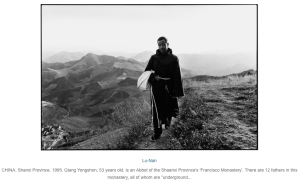
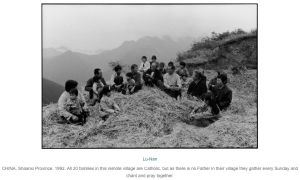
They capture images that are so commonplace in my mind – a member of the Franciscan order and a group of people gathered in prayer. But the background and undertones of the images are what make these shots so powerful, unique, and different, at least for me – the picturesque mountains so casually and elegantly providing the backdrop for the photos and the very real sense that the religious actions being taken are highly dangerous. The main picture in focus in the foreground with an exotic background mimics the very nature of that which is depicted (in my mind): something clear up front, with something very unknown in back.
The following two photos from the Catholic photo essay additionally left me awestruck:
Both capture the moment of baptism, initiation into the Catholic Church. The top pictures shows an 8-day-old baby being baptized, and the caption reveals that it is illegal for a person under the age of 18 years to be baptized. The bottom picture shows an 82-year-old woman being baptized. Both depict an overwhelming sense of strong faith, and, furthermore, a dedication to a religion that is so difficult to dedicate oneself to in China at this time. A lot of Nan’s work depicts heart-wrenching, sad realities in China, but I found that above all else, a true sense of community and commitment is evident in the people shown in his work.
Finally, I enjoyed this picture of Nan’s, because it reminds me of Carl and Ellie in the movie Up.
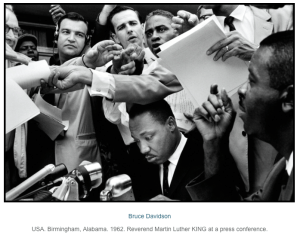
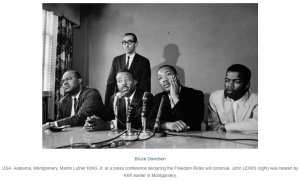
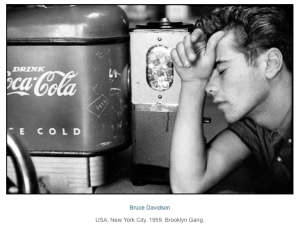
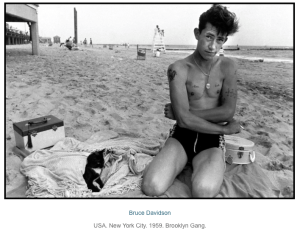


Recent Comments